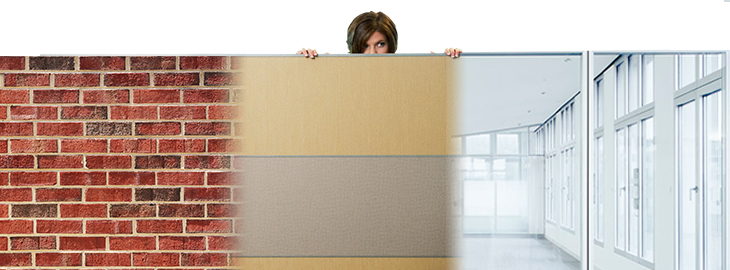
Mr. Gorbachev, Tear Down Those Walls. But Ease In To It, Please.
Posted On January 25, 2016
We’ve written quite a bit in this space recently about adjustments in the workplace to appeal to millennials, who now make up the largest percentage of the workforce.
But lest you think that just dumping the cubicles for couches and standing desks makes for an easy fix, heed the advice of Simon and Garfunkel:
Slow down. You move too fast.
We’ll excuse any millennials who may not have gotten that reference. It was from a tune called the 59th Street Bridge Song (Feelin’ Groovy) that was recorded a couple decades before you were born.
But the wisdom would be well-heeded managers who are looking to make their workspaces more amenable to an increasingly millennial workforce. Change can be good, but make those changes too rapidly or too universally and you risk alienating any Gen Xers or Baby Boomers on the payroll.
One workplace with which I’m familiar is an interesting case study, transitioning its office practically on a dime from a traditional corporate cubicle farm to an airy millennial haven.
Shortly after a reorganization, which included a large layoff and a new focus for the company, it moved into a new, much smaller space constructed for the millennial ethos. An open floorplan with no cubicles or dividers. Communal workspaces that fostered, even demanded, collaboration. Surfaces that could raised to transition to standing desks. The only closed-door offices were unassigned meeting spaces available to any employees in need of temporary privacy.
Employees were allowed, sometimes even encouraged, to work outside the office – at home, from coffee shops, wherever. Supervisors were promoted and dismissed with surprising speed, and levels of management were stripped away until only the bare minimum remained. Employees were given a high level of autonomy and kept in touch with managers largely via instant messaging platforms.
Many of the Gen X employees who remained with the firm found the changes jarring – too much, too quickly. One told me he found that the company was “trying way too hard to be hip.” Others saw the sheer volume of changes, clearly crafted toward the growing millennial base of the company’s workforce, as a sign that their places within the company were growing more tenuous.
Even some millennials complained about the “directionless” nature of the office, feeling that the relative lack of hands-on management resulted in a ship adrift.
Not all millennials are comfortable in workspace concepts designed to cater to millennials. USA TODAY noted a backlash amongst millennials against the idea of a remote office two years ago. A study cited by the newspaper found that despite their comfort with and affinity for their smartphones and other gadgetry necessary to connect remotely, millennials still craved face-to-face interaction.
And BBC noted last year a growing backlash against the open-office floorplan, interviewing a Microsoft manager who noted that too much togetherness and the lack of noise barriers can sap productivity.
“We never see the doors as barriers to communication,” Pankaj Arora, who heads up Microsoft’s Modern IT Innovation Group, told the BBC, “just as barriers to noise.”
Don’t get us wrong. Knocking down office doors and cubicle walls is often a great idea. But there are drawbacks to the millennial ideal. And creating the ultimate millennial workplace doesn’t mean it’s automatically going to be a place where people – even millennials – are going to want to work.
More than standing desks and open floorplans, a workplace is defined by its people and the standards by which their work is governed. Start by making sure yours are consistent and make sense.
And if you value your older employees, you might ease in the waters of change one step at a time instead of cannonballing straight in.